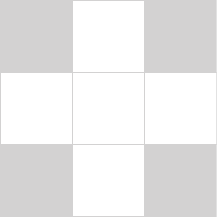
i
i
i
i
i
i
i
i
2 5
2 5
Reflection Models
As we discussed in Chapter 20, the reflective properties of a surface can be sum-
marized using the BRDF (Nicodemus et al., 1977; Cook & Torrance, 1982). In
this chapter, we discuss some of the most visually important aspects of material
properties and a few fairly simple models that are useful in capturing these prop-
erties. There are many BRDF models in use in graphics, and the models presented
here are meant to give just an idea of non-diffuse BRDFs.
25.1 Real-World Materials
Many real materials have a visible structure at normal viewing distances. For ex-
ample, most carpets have easily visible pile that contributes to appearance. For
our purposes, such structure is not part of the material property but is, instead, part
of the geometric model. Structure whose details are invisible at normal viewing
distances, but which do determine macroscopic material appearance, are part of
the material property. For example, the fibers in paper have a complex appearance
under magnification, but they are blurred together into an homogeneous appear-
ance when viewed at arm’s length. This distinction between microstructure that
is folded into BRDF is somewhat arbitrary and depends on what one defines as
“normal” viewing distance and visual acuity, but the distinction has proven quite
useful in practice.
In this section we define some categories of materials. Later in the chapter,
we present reflection models that target each type of material. In the notes at the
end of the chapter some models that account for more exotic materials are also
discussed.
637

i
i
i
i
i
i
i
i
638 25. Reflection Models
25.1.1 Smooth Dielectrics and Metals
Dielectrics are clear materials that refract light; their basic properties were sum-
marized in Chapter 4. Metals reflect and refract light much like dielectrics, but
they absorb light very, very quickly. Thus, only very thin metal sheets are trans-
parent at all, e.g., the thin gold plating on some glass objects. For a smooth
material, there are only two important properties:
1. How much light is reflected at each incident angle and wavelength.
2. What fraction of light is absorbed as it travels through the material for a
given distance and wavelength.
Figure 25.1. The amount
of light reflected and trans-
mitted by glass varies with
the angle.
The amount of light transmitted is whatever is not reflected (a result of energy
conservation). For a metal, in practice, we can assume all the light is immediately
absorbed. For a dielectric, the fraction is determined by the constant used in
Beer’s Law as discussed in Chapter 4.
Figure 25.2. Light is re-
peatedly reflected and re-
fracted by glass, with the
fractions of energy shown.
The amount of light reflected is determined by the Fresnel equations as dis-
cussed in Chapter 4. These equations are straightforward, but cumbersome. The
main effect of the Fresnel Equations is to increase the reflectance as the incident
angle increases, particularly near grazing angles. This effect works for transmitted
light as well. These ideas are shown diagrammatically in Figure 25.1. Note that
the light is repeatedly reflected and refracted as shown in Figure 25.2. Usually
only one or two of the reflected images is easily visible.
25.1.2 Rough Surfaces
If a metal or dielectric is roughened to a small degree, but not so small that diffrac-
tion occurs, then we can think of it as a surface with microfacets (Cook & Tor-
rance, 1982). Such surfaces behave specularly at a closer distance, but viewed
at a further distance seem to spread the light out in a distribution. For a metal,
an example of this rough surface might be brushed steel, or the “cloudy” side of
most aluminum foil.
For dielectrics, such as a sheet of glass, scratches or other irregular surface
features make the glass blur the reflected and transmitted images that we can
normally see clearly. If the surface is heavily scratched, we call it translucent
rather than transparent. This is a somewhat arbitrary distinction, but it is usually
clear whether we would consider a glass translucent or transparent.
Get Fundamentals of Computer Graphics, 3rd Edition now with the O’Reilly learning platform.
O’Reilly members experience books, live events, courses curated by job role, and more from O’Reilly and nearly 200 top publishers.

